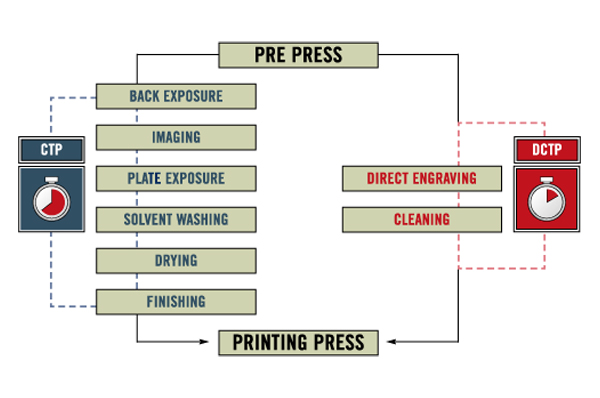SKIP OUT
Insufficient or missing ink transfer to the substrate of a part of the image, is generally caused by inconsistent contact pressure between the anilox roll, printing form and/or substrate, resulting in a poor ink transfer on to the finished product.
Cause
1 Low areas on printing forme.
2 Poor forme quality or make-ready.
3 Too low impression pressure.
4 Defective lock-up of the printing unit.
5 Printing forme cylinder bouncing.
6 Printing unit out of parallel.
7 Surface of the printing forme is not inked up. Treatment of the forme surface is not correct.
Solution
1 Check if variation in the forme thickness.
2 Control the pressure setting on the press. Check the correct forme preparation.
3 Adjust the pressure towards the printing forme and towards the anilox roller.
4 Check the nuts of the lock-up mechanism of the printing group.
5 Check concentricity of forme cylinders (and gears). Check if shafts, bolts, bearings, gears are free of dirt and do not show sign of wear.
6 Check the printing unit for the lateral parallelism.
7 Thoroughly wash the printing formes with the correct solvent. Replace the printing formes.
Helmut Mathes, troubleshooting defects supplied curtesey of Flexo & Gravure Int''l 2011
INK TRANSFER - FLEXO PRINT FORM
The flexo print form is a fundamental part of the printing process and has a significant impact on ink transfer and cleanliness of the inking process.
Read morePRINTING PRESSURES
Flexo is a contact and pressure sensitive process. Increasing printing pressure, influences ink transfer and has a significant impact on print quality and performance
Read morePRESS DYNAMICS & BALANCE
When printing at high speeds, any variations in accuracy or out-of-balance of rotating parts, are magnified and can lead to vibrations.
Read more


